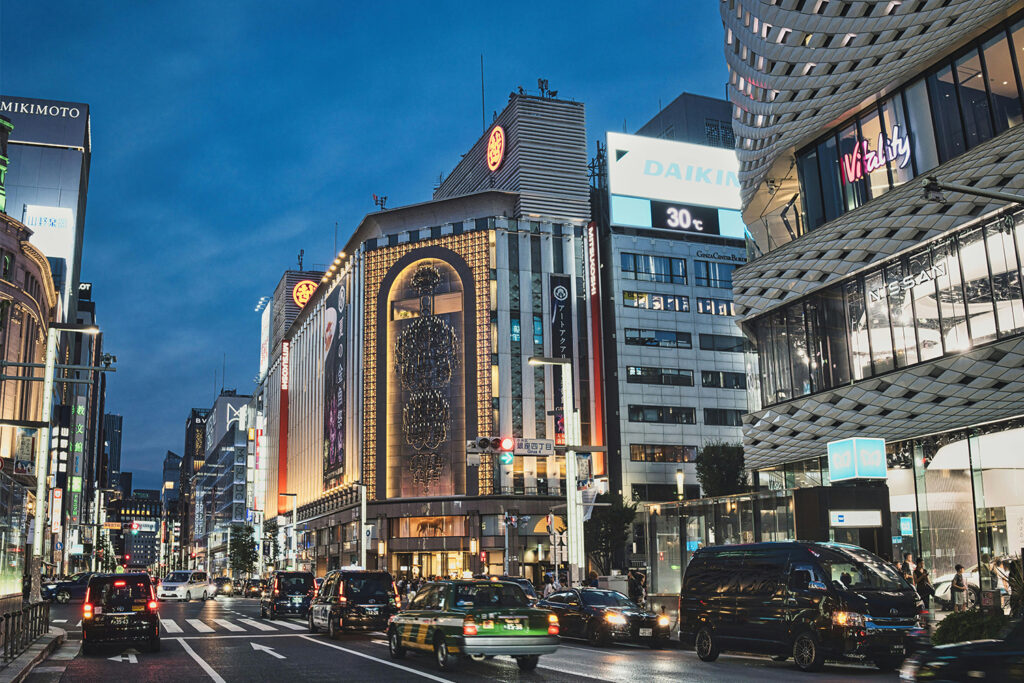
Japandi style has become one of the world’s most popular interior design trends. This simple blend of Japanese minimalism and Scandinavian comfort has spread far beyond Japan to homes across the globe. For Tokyo residents, especially those in luxury properties, Japandi offers a perfect way to create peaceful, practical living spaces.
The rise of Japandi reflects how people worldwide want simpler, more sustainable homes. In Tokyo’s exclusive real estate market, where every square meter counts, Japandi principles help create beautiful spaces that work well for daily life.
How Japandi Design Started
Japandi style brings together the best of two different design traditions: Japanese minimalism and Scandinavian comfort. Japanese design, based on Zen Buddhism ideas, focuses on simplicity, calm spaces, and finding beauty in imperfection (called wabi-sabi). Scandinavian design adds warmth, practicality, and hygge – the Danish idea of creating cozy, comfortable homes.
This design partnership began about 150 years ago when Scandinavian designers first visited Japan after the country opened its borders. The two cultures found they shared similar values: they both loved simple designs, handmade items, and natural materials. This friendship between cultures created a design style that still influences homes today.
Japandi goes beyond just looking good. Many designers also use feng shui ideas in Japandi homes, arranging furniture and choosing colors to create good energy and peaceful feelings throughout the space.
Japandi’s Worldwide Popularity

The simple mix of Japanese and Scandinavian design has become incredibly popular around the world. Interior design experts say the style works so well because it helps people deal with busy, stressful modern life by creating calm, organized homes.
Japandi keeps growing and changing while staying true to its main ideas. Today, the style allows people to add more personal touches, letting homeowners include their own meaningful items while keeping the clean, simple look that makes Japandi special.
Japandi has spread everywhere – from fancy apartments in New York to family homes in London, and of course, luxury properties in Tokyo. The style’s basic ideas – clean lines, uncluttered rooms, and useful furniture – work well for people everywhere who want homes that are both beautiful and practical.
What Makes Japandi Design Special
Japandi design is built on a few key ideas that create its special look. The most important is minimalism – every item in the room should have a purpose. This creates open, uncluttered spaces with clean, simple lines that feel calm and organized.
Natural light is very important in Japandi design. It brings the outdoors inside and makes spaces feel bright and connected to nature. Large windows and light-colored surfaces help spread daylight throughout the room.
The materials used in Japandi design are all natural and sustainable. Wood, bamboo, linen, wool, hemp, and stone are chosen because they feel warm and real. These materials get better with age and develop character over time, which fits with the Japanese idea of finding beauty in things that aren’t perfect.
Colors in Japandi design are kept simple and neutral. Beige, cream, light grey, and white form the main palette. Sometimes people add soft accent colors like gentle greens or earth tones, but these are used sparingly to keep the peaceful feeling that Japandi is known for.
Japandi Furniture and Quality Craftsmanship
Japandi styles feature beautiful craftsmanship focusing on quality and handmade pieces over throwaway, cheap structures. This emphasis on durability and timeless design aligns perfectly with Japanese values of respect for materials and long-term thinking.
The main difference between Japanese and Scandinavian furniture is that the Scandis tend to use lighter woods, whereas the Japanese use darker to mid-tone woods. You can integrate both wood tones into your Japandi interior, creating a beautiful contrasting effect. This flexibility allows for personal expression while maintaining the style’s core principles.
The furniture selection process in Japandi design emphasizes intentionality over quantity. Instead of placing a large order of furniture from a big-box store, slowly choose a few high-quality, well-made pieces with natural materials that have a specific function in the space. Japandi also focuses on artisanal, handcrafted items, so you can use this opportunity to support local furniture makers.
Good for the Environment

Japandi design naturally supports environmental protection by focusing on natural materials and timeless looks. The style encourages buying quality pieces that last for many years rather than trendy items that quickly go out of style.
This environmental focus fits well with Japanese culture, where traditional ideas like mottainai (feeling bad about waste) emphasize not wasting resources. The Japandi approach of choosing fewer, better items matches these cultural values while helping protect the environment.
Using locally sourced and responsibly made materials helps environmental goals even more. By choosing furniture made from well-managed forests, recycled materials, and safe finishes, homeowners can create beautiful spaces that reflect their care for the environment.
Japandi in Tokyo’s Luxury Properties
For Tokyo’s discerning residents, Japandi design offers a smart approach to city living that maximizes both comfort and practicality. The style’s clean lines and efficient use of space make it perfect for Tokyo’s exclusive properties, where every square meter is valuable.
Tokyo’s luxury property developers have noticed this trend. Many new high-end developments now include Japandi-inspired designs because buyers appreciate the style’s balance of Japanese cultural authenticity and international appeal. Properties with Japandi design often sell for higher prices because of their timeless appeal and careful attention to detail.
Where to Find Japandi Furniture in Japan
For those looking to incorporate authentic Japandi pieces into their Tokyo homes, several notable sources offer high-quality options:
CondeHouse, crafting furniture in Hokkaido’s forests, represents the pinnacle of Japanese craftsmanship that shares Japanese aesthetics with the world. Their pieces demonstrate the perfect marriage of natural materials and thoughtful design.
Actus and FLYMEe offer curated selections of both Japanese and international furniture that align with Japandi principles, providing Tokyo residents with diverse options for creating their ideal living spaces.
MUJI stands as perhaps the most accessible example of Japanese minimalist design principles. Their furniture collections embody the essential Japandi philosophy of functional beauty and sustainable materials.
Re:ceno specializes in contemporary furniture that bridges Japanese and Scandinavian design sensibilities, offering pieces that are both functional and aesthetically pleasing.
For those seeking more international selections, Japandi Store and Japandi Supply House provide access to carefully curated pieces from both Japanese and Scandinavian designers, though international shipping may be required.
Why Japandi Makes People Feel Good

Interior design experts say that Japandi’s appeal goes far beyond just looking nice. The style focuses on creating calm, functional spaces using natural materials, neutral colors with earth tones, and uncluttered rooms that feel both open and cozy.
The mental health benefits of Japandi design are especially valuable in busy cities like Tokyo. The overall peaceful atmosphere creates welcoming spaces that provide calm relief after stressful days. For Tokyo’s fast-paced lifestyle, this relaxing quality is essential for maintaining mental well-being and work-life balance.
The style’s emphasis on mindfulness and being intentional encourages people to slow down and appreciate their surroundings. By filling homes with carefully chosen, meaningful objects in peaceful settings, people can feel more peace and happiness in their daily lives.
Using Japandi in Small Tokyo Homes
Japandi design works really well in Tokyo’s small living spaces. The style’s simple approach and clean lines help create an open, airy feeling that makes small rooms look bigger and more spacious. This is very valuable in a city where space is expensive and limited.
For busy families, achieving the Japandi look requires smart storage solutions. Natural containers like woven baskets, built-in cabinets, and folding screens can hide everyday items while keeping the clutter-free appearance that Japandi needs. This “organized minimalism” lets families enjoy Japandi’s benefits without giving up practicality.
Choosing the right furniture becomes very important in small spaces. Pieces that serve multiple purposes help maximize usefulness while keeping clean sight lines. Low furniture makes ceilings look higher, while light-colored woods and fabrics help spread natural light throughout the room.
The Future of Japandi Design

Japandi continues to grow and change while keeping its basic ideas of simplicity, practicality, and natural beauty. Current trends show more focus on personalization, letting homeowners add meaningful objects and personal touches while respecting the style’s simple foundation.
Adding technology to Japandi spaces is another important change. Tokyo’s tech-loving residents are finding ways to include smart home features smoothly into the simple style, creating homes that are both high-tech and spiritually calming.
Environmental concerns continue to drive new ideas in Japandi design, with more focus on locally sourced materials, energy-saving solutions, and design principles that minimize waste throughout the product’s life.
Japandi’s Impact Around the World
Japandi design represents a move away from bold patterns and too much decoration toward calm, inviting spaces made for rest and relaxation. This movement toward peace reflects worldwide trends that emphasize mindfulness and living with purpose.
Japandi’s influence goes beyond homes into businesses, hotels, and city planning. Tokyo’s hotels, restaurants, and shops increasingly use Japandi ideas to create welcoming environments that appeal to both Japanese people and international visitors.
This worldwide acceptance shows that people everywhere need peaceful, harmonious living spaces. As city life becomes more complex and demanding, Japandi offers a timeless solution that puts well-being and connection to nature first.
Conclusion: A Timeless Style for Modern Living
Japandi design is more than just a passing trend – it represents a way of living that values quality over quantity, mindfulness over materialism, and harmony over chaos. For Tokyo residents who want to create homes that reflect both their cultural heritage and modern lifestyle needs, Japandi offers a perfect solution.
The style’s worldwide popularity shows its universal appeal, while its roots in Japanese culture provide authenticity and depth. As Tokyo continues to grow as a global city, Japandi design serves as a bridge between traditional Japanese values and modern international living.
Whether renovating a luxury apartment in Roppongi or designing a family home in Shibuya, using Japandi principles creates spaces that work well for daily life and provide emotional restoration. In a city where life can move very fast, these peaceful homes become essential sanctuaries for modern urban living.
For those considering luxury real estate in Tokyo, properties with Japandi-inspired design represent not just homes, but lifestyle investments that focus on well-being, sustainability, and timeless appeal. As this design philosophy continues to gain recognition worldwide, Tokyo remains at its cultural heart, offering residents the chance to experience authentic Japandi living where it began.
Q&A: Common Questions About Japandi Design
What exactly is Japandi design? Japandi is a fusion of Japanese minimalism and Scandinavian functionality that emphasizes simplicity, natural materials, and intentional living. The style combines the zen-like tranquility of Japanese design with the cozy warmth of Scandinavian hygge.
Why has Japandi become so popular globally? The style’s emphasis on sustainability, functionality, and mental well-being resonates with modern lifestyle needs. Its timeless aesthetic and adaptability to different cultures and spaces make it universally appealing.
How can I incorporate Japandi design in a small Tokyo apartment? Focus on multi-functional furniture, natural materials like wood and bamboo, neutral color palettes, and strategic decluttering. Use natural light and plants to create openness and connection to nature.
What materials are essential for authentic Japandi design? Natural materials are key: wood (both light Scandinavian and darker Japanese varieties), bamboo, linen, wool, stone, and paper. Avoid synthetic materials and focus on pieces that age beautifully.
Is Japandi design expensive to implement? While quality pieces require investment, Japandi’s “less is more” philosophy means buying fewer, better items. The focus on durability and timelessness makes it cost-effective long-term.
Housing Japan specializes in luxury real estate and property investments in central Tokyo, offering properties that embody the sophisticated lifestyle preferences of discerning residents. Whether you’re seeking a minimalist sanctuary or a family home that balances tradition with modernity, our team understands the importance in having the perfect living environment.
Contact Us
Housing Japan
7F BPR Place Kamiyacho, 1-11-9 Azabudai, Minato-ku, Tokyo, Japan 106-0041











